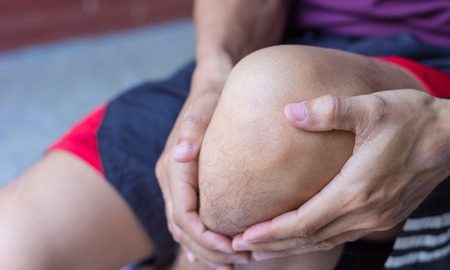A New Knee without Surgery

Age, injury, and obesity can all lead to arthritis, resulting in painful and stiff joints. Arthritis affects more than 50 million Americans. The most common type is osteoarthritis, affecting 27 million people in America. Nearly one in two people have symptomatic osteoarthritis of the knee by the time they are 85 years old. It is estimated that by the year 2040, approximately 78 million Americans will have physician-diagnosed arthritis.
Osteoarthritis is a type of wear-and-tear arthritis. Age is a major risk factor. Loss of the natural cushioning cartilage between joints leads to pain, stiffness, and swelling from bones rubbing together. In severe cases, mobility is affected. The knee is the most commonly affected part of the body. Symptoms of osteoarthritis typically begin in the mid-40s. Women are more likely to suffer from osteoarthritis than men.
Conservative treatment for osteoarthritis consists of weight loss, exercise, and pain-relieving and anti-inflammatory medications. When these do not work, corticosteroid and hyaluronic injections may be tried. Alternative therapies such as acupuncture or supplements like glucosamine and chondroitin work for some people. Braces and physical therapy may help others. However, in severe cases, the only definitive treatment is joint replacement with orthopedic hardware, which has a generally good outcome but is a major surgery associated with a long rehabilitation.
Now, doctors are finding that fat-derived stem cells taken from the patient’s own body, concentrated, and re-injected into the affected area is giving a new lease of life to old knees. A case in point is 71-year-old Betty Hudson, who first began experiencing knee problems at age 38 following a skiing injury. After years of surgery and steroid injections failed to provide relief, Hudson decided to give stem cell treatment a try.
Hudson’s physician, Dr. Bill Johnson, took stem cells from her body and injected them into her knee. “These cells help heal tissues that cannot heal themselves,” explains Dr. Johnson. The treatment is a relatively simple outpatient procedure. The retrieval of the cells takes about 15 minutes although the separation takes a little longer. Once the concentrated mix is ready, it is injected into the knee (or hip or shoulder) and the patient can go home.
Hudson is extremely pleased with the results of the stem cell therapy. She has a new knee without undergoing joint replacement surgery. “I recently walked 5 miles at the State Fair without pain and took a family vacation to Ireland,” she says. Her knee feels so good that she is contemplating getting back on skis again this winter, something she has not done in 30 years.
References:
- http://www.wfaa.com/news/health/fat-stem-cell-treatment-used-to-ease-arthritis-pain/329709130
- http://www.webmd.com/osteoarthritis/
- //www.cdc.gov/arthritis/data_statistics/arthritis-related-stats.htm


